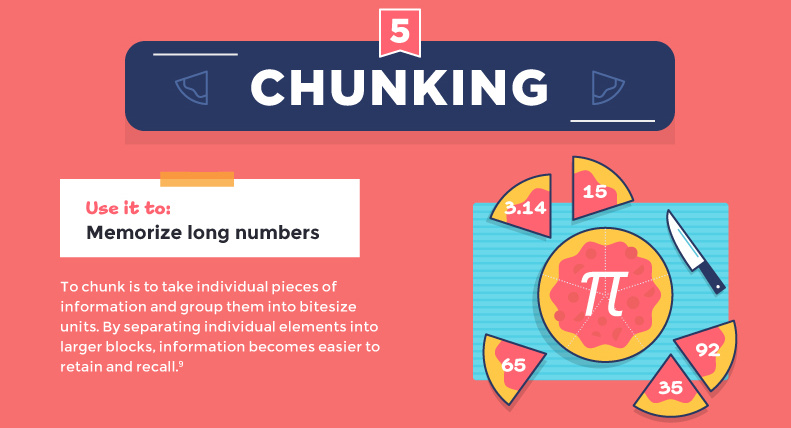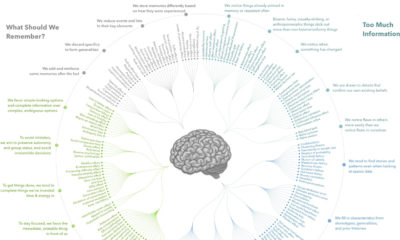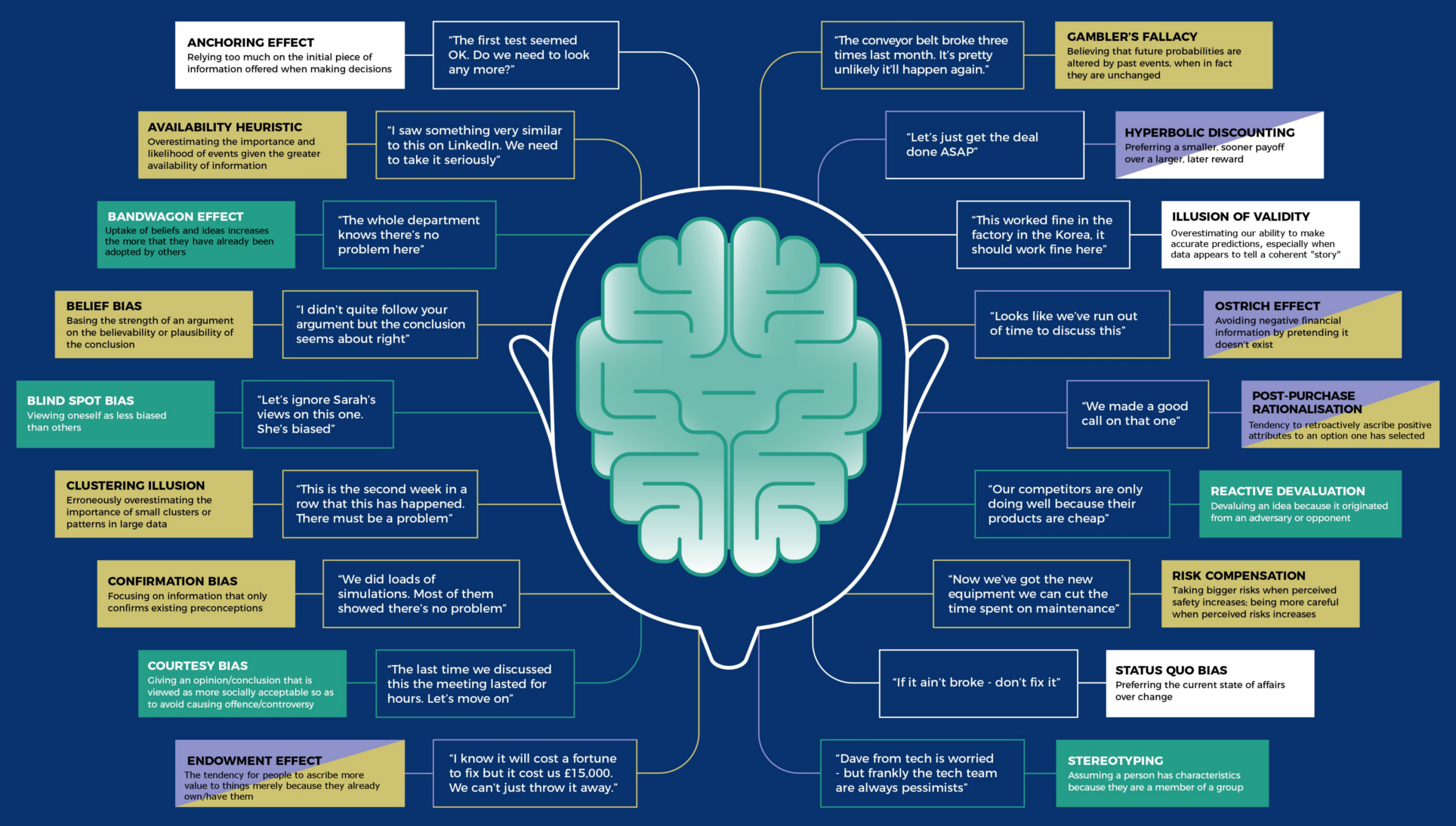With limitless information at our fingertips, it’s no surprise that our ability to store and recall information has begun to atrophy. This mental reliance on technology is often referred to as the Google Effect. A recent report suggested that 50% of people make no effort to recall information or seek answers from those around them before searching online. Also, two-thirds of consumers say that by letting their devices do the mental legwork, it enables them to achieve more.
How to Remember Anything
If devices are so good at storing our information and answering questions, why bother trying to remember anything at all? Experts warn that by not actively recalling information, we’re dooming ourselves to a future with fewer long-term memories and more difficulty retaining information in the short term. Today’s infographic, from QuidCorner, lists some practical techniques to help you reclaim your short-term memory.
Whether you’re learning a new language or just trying to remember the access code to your office door, there are a few tricks that can help you more effectively remember information.
Memorization Techniques
LOCI For more demanding memory tasks like speeches, visualize portions of information along a path you know well (e.g. the rooms of your home). This technique uses your navigation and spatial memory skills to help you recall pieces of information in a linear way. LINKING One technique that can help you memorize lists is called linking, or visualization and association. Linking plays to our natural inclination for understanding the world through storytelling. By mentally linking line items to one another in a creative way, you’ll be more likely to remember than if you simply tried to memorize the list. CHUNKING More complex pieces of information – long numbers, for example – are easier to remember when we break them into pieces. A familiar example of “chunking” is the way telephone numbers are formatted. In the 1950s, Bell Laboratories teamed up with professor George A. Miller of Harvard University to gain insight into how we encode information into our long-term memory. In short, Miller’s research determined that the (555) 555-5555 format for displaying phone numbers was the most effective at allowing our brains to store contact information. -George A. Miller
A key takeaway to remember
Many of the techniques described above suggest triggering other parts of your brain to help form stronger memories. In this age of digital distraction, simply repeating information a few times is no match for mental visualization and adding meaningful context to information. Remember that, and you’ll be able to remember almost anything.
on Even while political regimes across these countries have changed over time, they’ve largely followed a few different types of governance. Today, every country can ultimately be classified into just nine broad forms of government systems. This map by Truman Du uses information from Wikipedia to map the government systems that rule the world today.
Countries By Type of Government
It’s important to note that this map charts government systems according to each country’s legal framework. Many countries have constitutions stating their de jure or legally recognized system of government, but their de facto or realized form of governance may be quite different. Here is a list of the stated government system of UN member states and observers as of January 2023: Let’s take a closer look at some of these systems.
Monarchies
Brought back into the spotlight after the death of Queen Elizabeth II of England in September 2022, this form of government has a single ruler. They carry titles from king and queen to sultan or emperor, and their government systems can be further divided into three modern types: constitutional, semi-constitutional, and absolute. A constitutional monarchy sees the monarch act as head of state within the parameters of a constitution, giving them little to no real power. For example, King Charles III is the head of 15 Commonwealth nations including Canada and Australia. However, each has their own head of government. On the other hand, a semi-constitutional monarchy lets the monarch or ruling royal family retain substantial political powers, as is the case in Jordan and Morocco. However, their monarchs still rule the country according to a democratic constitution and in concert with other institutions. Finally, an absolute monarchy is most like the monarchies of old, where the ruler has full power over governance, with modern examples including Saudi Arabia and Vatican City.
Republics
Unlike monarchies, the people hold the power in a republic government system, directly electing representatives to form government. Again, there are multiple types of modern republic governments: presidential, semi-presidential, and parliamentary. The presidential republic could be considered a direct progression from monarchies. This system has a strong and independent chief executive with extensive powers when it comes to domestic affairs and foreign policy. An example of this is the United States, where the President is both the head of state and the head of government. In a semi-presidential republic, the president is the head of state and has some executive powers that are independent of the legislature. However, the prime minister (or chancellor or equivalent title) is the head of government, responsible to the legislature along with the cabinet. Russia is a classic example of this type of government. The last type of republic system is parliamentary. In this system, the president is a figurehead, while the head of government holds real power and is validated by and accountable to the parliament. This type of system can be seen in Germany, Italy, and India and is akin to constitutional monarchies. It’s also important to point out that some parliamentary republic systems operate slightly differently. For example in South Africa, the president is both the head of state and government, but is elected directly by the legislature. This leaves them (and their ministries) potentially subject to parliamentary confidence.
One-Party State
Many of the systems above involve multiple political parties vying to rule and govern their respective countries. In a one-party state, also called a single-party state or single-party system, only one political party has the right to form government. All other political parties are either outlawed or only allowed limited participation in elections. In this system, a country’s head of state and head of government can be executive or ceremonial but political power is constitutionally linked to a single political movement. China is the most well-known example of this government system, with the General Secretary of the Communist Party of China ruling as the de facto leader since 1989.
Provisional
The final form of government is a provisional government formed as an interim or transitional government. In this system, an emergency governmental body is created to manage political transitions after the collapse of a government, or when a new state is formed. Often these evolve into fully constitutionalized systems, but sometimes they hold power for longer than expected. Some examples of countries that are considered provisional include Libya, Burkina Faso, and Chad.









